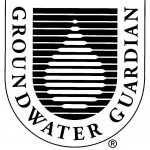Specter to give Poly V update in Hazleton
http://www.republicanherald.com/articles/2009/04/30/news/local_news/pr_republican.20090430.a.pg1.pr30specter_s1.2487238_top4.txt
U.S. Sen. Arlen Specter will be at Penn State Hazleton on Friday to update a group of residents on studies into high instances of a rare blood cancer in their neighborhood between McAdoo and Tamaqua.
BY TOM RAGAN
STAFF WRITER
tragan@standardspeaker.com
Published: Thursday, April 30, 2009 4:14 AM EDT
U.S. Sen. Arlen Specter will be at Penn State Hazleton on Friday to update a group of residents on studies into high instances of a rare blood cancer in their neighborhood between McAdoo and Tamaqua.
Specter will join residents, medical professionals and the media at 3:15 p.m. in the Evelyn Graham Academic Building, Room 109, on campus to discuss what some say is a cancer cluster in a section of Rush Township.
Last month, Congress approved $5.5 million for a study to find out why the area experienced so many reported cases of polycythemia vera. The cluster, studies show, extends into parts of Luzerne, Schuylkill and Carbon counties.
About $5 million will be directed to the Centers for Disease Control and Prevention to look at trends, risk factors and environmental impact related to the cluster. Read more
Governor Rendell Announces $530 Million Investment in Water Infrastructure
Funds for the projects are disbursed after bills for work are paid and receipts are submitted to PENNVEST.
For more information about PENNVEST, visit www.pennvest.state.pa.us. To track Pennsylvania’s investment of American Recovery and Reinvestment Act funding, visit www.recovery.pa.gov.
In Carbon County
* East Penn Township received a $36,000 loan and a $3.8 million grant to construct a new wastewater collection and treatment system to eliminate the use of malfunctioning on-lot septic systems that are discharging untreated wastewater.
Carbon County e-cycling event slated for April 27, 28
http://www.tnonline.com/node/436937
April 24, 2009
The Carbon County Department of Solid Waste will hold its spring 2009 electronics recycling collection in Jim Thorpe in April.
The two-day event will be held at at Jim Thorpe Memorial Hall parking lot, located at East 10th St., Jim Thorpe, on Monday, April 27, from 9 a.m. to 2 p.m., and Tuesday, April 28, from noon until 6 p.m.
Anything electronic will be accepted at no charge to the county or its residents.
Acceptable materials include: VCRs, DVD players, radios, stereo equipment, computers (monitors, towers, printers, scanners, keyboards), laptops, hard drives, mainframe and telecom equipment, application (OEM) equipment, circuit boards of any kind, fax machines, typewriters, and telephones. TVs will be accepted by AAA Computer and Electronics Recycling with a charge of $10.
Household appliances or items with Freon will not be accepted.
For more information or questions, contact the Solid Waste office at (610) 852-5111.
Earth Day: Reduce Your Water Footprint on a Shoestring
Want to save water this Earth Day but don’t have the budget for a bathroom makeover or landscaping redesign? Just take some of these 10 simple tips to heart and stop pouring money down the drain.
- Teach an old faucet new tricks. If you’re not ready to invest in a new faucet, why not update your old one with a WaterSense labeled aerator? Aerators can cost as little as a few dollars.
- Perfect your timing. Once the weather starts warming up, remember to water your garden during the cool morning hours to reduce evaporation.
Lehigh Gap Nature Center Programs
Saturday, April 18 at Lehigh Gap Nature Center.
7:00 a.m. — Bird walk
9:00 a.m. — Habitat gardening session to plant a few new plants and remove butterfly bush around the Osprey House grounds and along the Prairie Warbler Trail. We will also explore the new plantings around the loop road at the Osprey House.
11:00 a.m. — Native Plant Workshop with Sue Tantsits, Edge of the Woods Native Plant Nursery.
We are fortunate to have Edge of the Wood so near to us and to have them providing these workshops for us. Please come out and learn more about native plants and our habitat gardens project.
VOLUNTEERS WANTED: Want to help with a major habitat restoration and research project at LGNC? Volunteer on April 25, 26 or May 2 to help plant native wildflower plants in the grassland restoration area for the nature center. We are working from 9-3 each day and you can sign up for morning, afternoon or all day. We are providing lunch, so please RSVP if you plan to help so we can have lunch for you.
Dan Kunkle
Lehigh Gap Nature Center
P.O. Box 198
Slatington, PA 18080
610-760-8889
www.lgnc.org
Contaminants in 20 Percent of U.S. Private Wells
More than 20 percent of private domestic wells sampled across the nation contain at least one contaminant at levels of potential health concern. About 43 million people — or 15 percent of the Nation’s population — use drinking water from private wells, which are not regulated by the Federal Safe Drinking Water Act. USGS scientists sampled about 2,100 private wells in 48 states and found that the contaminants most frequently measured at concentrations of potential health concern were inorganic contaminants, including radon and arsenic. These contaminants are mostly derived from the natural geologic materials that make up the aquifers from which well water is drawn. Complete findings are available at http://water.usgs.gov/nawqa/studies/domestic_wells/. For more information, listen to a podcast interview with USGS scientist Leslie DeSimone on this report at Contamination in U.S. Private Wells or contact Leslie at ldesimon@usgs.gov or (508) 490-5023.
Beltzville State Park Programs
Spring Clean Up at Beltzville State Park!
Saturday, April 18
Meet at Environmental Interpretive Center (EIC)
Spring Clean-up Day is an excellent way to give something back to Beltzville State Park by lending a hand in getting ready for the summer. Join us for the entire morning or just for a portion of it! Bring your family for an hour or two! Celebrate Earth Day and The Great PA Cleanup! Great for families, scouts, community service & more!
Earth Day began on April 22, 1970.
*Earth Day Park Cleanup 9:30 am—1 pm
Join other DCNR Conservation Volunteers, as we spruce up Beltzville’s Native plant Butterfly garden and surrounding area. Volunteer “jobs” include planting, mulching, weeding, and more! If enough participants & groups register, we will be working on trails & litter cleanup too! Volunteers will be asked to work on small and large clean-up projects and will be assigned to projects based on their skills, abilities and desires. Wear comfortable clothing, sturdy footwear, leather/canvas gloves (if you have them), and bring a snack & a drink.
***MORE VOLUNTEER OPPORTUNITIES:
Beltzville’s Maintenance staff has been working hard on the Park’s trails. We are plagued with invasive plants such as Tartarian honeysuckle, Autumn Olive, Russian Olive & Multi-flora rose that grow at an exponential rate. We used a plant eating machine (not the technical term!) to clear a lot of trails. Beyond our needs for April 18, we also need help removing branches from the cleared trails (Trinity Gorge and Preacher’s Camp trail).
We also have litter to clean up. Pohopoco Drive is in serious need of help. If you need community service or would just like to be outside, please call us!
In PURSUIT of AMPHIBIANS
Friday, May 1
5:30 pm – 7:30 pm @ EIC
What’s that melodic sound coming from your local wetland? Join Carissa Reilly-Longo on our annual hunt for frogs, toads & salamanders at wetland locations within the Park. Hear the resounding Spring Peeper
chorus at the U.S. Army Corps of Engineers Spillway area. Program will start in the EIC with an introduction to amphibian ID and frog calls. Dress to get muddy & bring waders/water shoes if you have them! Families are welcome! Please register.
Registration is necessary. You may register online, via email or phone.
Beltzville State Park
2950 Pohopoco Drive
Lehighton, PA 18235-8905
610.377.9150 fax: 610.377.9439
E-mail: RA-nrspBeltEnvEd@state.pa.us
www.dcnr.state.pa.us OR www.visitPAparks.com
Lehigh Gap Nature Center
There are lots of great events and volunteer opportunities at Lehigh Gap Nature Center this spring. Here is a listing of the events for the next 6 weeks so you can get them on your calendar and plan on attending some of the sessions. PLEASE NOTE — the May 24 bird walk was listed as May 23 (in error) in the Calendar of Events sent out earlier. The bird walk is on Sunday, May 24.
College of Ag Sciences 2009 summer camp takes students to the swamp
Monday, March 30, 2009
Penn State’s Stone Valley Recreation Area may sound like your typical summer camp, with fields, forests and streams, but students attending the annual College of Agricultural Sciences Conservation Leadership School will gain a lot more than sun and fun.
The Conservation Leadership School has been offering students the chance to increase their awareness of environmental conservation for more than 50 years.
Welcome to the Online Home of the Carbon County Groundwater Guardians
 We were founded in 1999 to provide education on private wells,
We were founded in 1999 to provide education on private wells,  water and septic systems. As a 501(c)(3) nonprofit, volunteer organization, all our programs are designed to help homeowners with questions or problems and provide education to adults and students. For more information click ABOUT.
water and septic systems. As a 501(c)(3) nonprofit, volunteer organization, all our programs are designed to help homeowners with questions or problems and provide education to adults and students. For more information click ABOUT.
###
